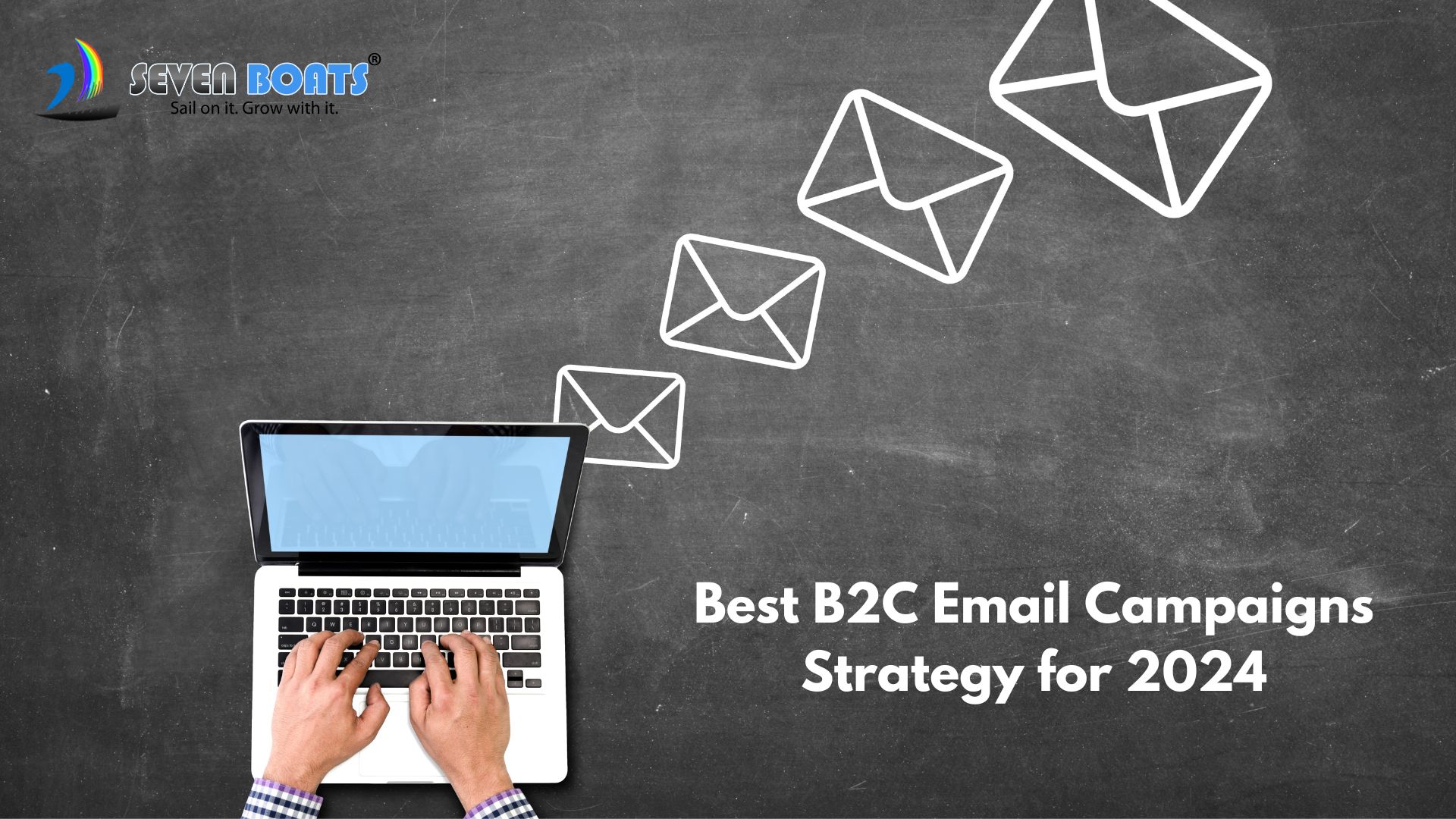An effective B2C (business-to-consumer) email campaign is a powerful marketing tool that can drive sales, build brand loyalty, and foster long-lasting customer relationships. In today’s digital age, email remains one of the most cost-effective and widely used channels for B2C businesses to connect with their audience.
According to Statista, the number of global email users is expected to reach 4.6 billion by 2025, making email marketing an indispensable part of any B2C strategy. Moreover, email marketing has an impressive average return on investment (ROI) of $36 for every $1 spent (Source: Litmus). This blog aims to provide a comprehensive guide to creating successful B2C email campaigns that resonate with your target audience and deliver measurable results.
Understanding B2C Email Campaigns
A successful B2C email campaign is built on several key components:
1. Audience Segmentation: Dividing your email list into specific groups based on demographics, interests, or behavior allows you to deliver personalized and relevant content. Segmented campaigns can generate a 760% increase in revenue (Source: CampaignMonitor).
2. Compelling Subject Lines: With an average person receiving over 120 emails per day, a compelling subject line is crucial to stand out in crowded inboxes. Subject lines with a descriptive preview can increase open rates by 8% (Source: Inboxers). For example, a subject line like “50% Off This Weekend Only” can pique a subscriber’s interest and encourage them to open the email.
3. Personalization: Personalized emails can generate 6x higher transaction rates compared to non-personalized emails (Source: Experian). Dynamic content blocks, behavior-based triggers, and segmentation strategies are key to delivering personalized experiences. Amazon’s personalized product recommendations account for 35% of their total revenue (Source: McKinsey).
4. Engaging Content: Whether it’s a promotional offer, educational resource, or entertaining storytelling, engaging content is the heart of any successful B2C email campaign. Visually appealing emails with compelling copy can increase click-through rates by 300% (Source: HubSpot).
5. Call to Action (CTA): A clear and compelling CTA is essential to drive desired actions, such as making a purchase, scheduling an appointment, or downloading a resource. Emails with a single, clear CTA can increase clicks by 371% and sales by 1617% (Source: Wordstream).
6. Timing and Frequency: Sending emails at the right time and with an appropriate frequency is crucial to avoid overwhelming subscribers and maximizing engagement. For instance, research shows that Thursdays are the best day to send B2C emails, with open rates of 18.9% (Source: GetResponse).
One of the most successful B2C email campaigns was Anthropologie’s “Wish You Were Here” campaign, which featured stunning visuals and personalized content based on subscribers’ browsing behavior. The campaign resulted in a 20% increase in revenue and a 30% boost in click-through rates (Source: Anthropologie).
Crafting Your B2C Email Campaign
To create an effective B2C email campaign, start by setting clear goals, such as increasing sales, driving website traffic, or promoting brand awareness. Next, understand your target audience by analyzing their demographics, interests, and behavior.
When creating content, consider various types like promotional offers, educational resources, or entertaining stories. Effective copy and visually appealing designs are essential for capturing attention and driving engagement. Implement personalization tactics like dynamic content blocks, behavior-based triggers, and segmentation strategies to deliver tailored experiences.
Optimizing your emails for mobile devices is also crucial, as over 60% of emails are opened on smartphones and tablets (Source: Litmus). Responsive design and mobile-friendly templates can increase engagement rates by up to 30% (Source: EmailMonday).
Best Practices for B2C Email Campaigns
A/B testing is a powerful tool for optimizing your email campaigns. By testing variables like subject lines, send times, or design elements, you can identify the most effective strategies for your audience. A/B testing can improve email Marketing metrics by up to 37% (Source: Invesp).
Ensuring email deliverability and compliance with anti-spam laws and regulations is essential to reach your subscribers’ inboxes. Following best practices like maintaining clean email lists, using double opt-in methods, and monitoring spam complaints can improve deliverability rates by up to 95% (Source: EmailToolTester).
Building and growing your email list through opt-in forms, lead magnets, and strategic partnerships can expand your reach. On average, email lists naturally degrade by 25% every year (Source: Hubspot), so consistent list-building efforts are crucial.
Measuring success is crucial for continuous improvement. Key performance indicators (KPIs) like open rates (average 21.5% for B2C), click-through rates (2.6%), conversion rates, and return on investment (ROI) should be closely monitored and analyzed to identify areas for optimization (Source: Constant Contact).
Tools and Resources for B2C Email Campaigns
Several email marketing platforms like Mailchimp (9 million users), Constant Contact (650,000 users), and HubSpot (120,000 users) offer user-friendly tools for creating, sending, and tracking B2C email campaigns (Sources: Mailchimp, Constant Contact, HubSpot).
Design tools like Canva (60 million users) and BEE Pro (500,000 users) can help create visually appealing emails, while analytics software like Google Analytics (billions of users) and Litmus (250,000 users) provide valuable insights into campaign performance (Sources: Canva, BEE, Google Analytics, Litmus).
Additionally, educational resources like blogs, podcasts, and online communities like EmailMania (100,000 members) and Email Geeks (50,000 members) can help you stay up-to-date with the latest trends and best practices in B2C email marketing (Sources: EmailMania, EmailGeeks).
Challenges and Solutions in B2C Email Marketing
Overcoming email fatigue and standing out in crowded inboxes is a common challenge. Providing valuable and personalized content, along with clear opt-out options, can help mitigate this issue. For instance, 63% of millennials admit to ignoring branded emails (Source: Hubspot).
Dealing with spam filters is another hurdle, but following best practices like maintaining clean email lists, adhering to anti-spam laws, and monitoring deliverability metrics can improve your chances of reaching subscribers’ inboxes. Over 20% of emails never make it to the inbox due to spam filters (Source: ReturnPath).
Balancing personalization with privacy concerns is crucial in the age of data privacy regulations like GDPR and the California Consumer Privacy Act (CCPA). Being transparent about data collection practices and offering clear opt-in and opt-out options can build trust with your audience. 92% of consumers avoid companies that do not protect their privacy (Source: Salesforce).
Future Trends in B2C Email Campaigns
Automation and AI integration will continue to drive personalization and efficiency in B2C email campaigns. Automated email campaigns can generate 320% more revenue than non-automated ones (Source: Omnisend).
Interactive emails with multimedia elements and shoppable features will enhance the user experience. Embedded videos in emails can increase click-through rates by up to 300% (Source: Martech Zone).
An increased focus on data privacy and compliance with regulations will shape email marketing strategies. By 2023, over 65% of the world’s population will have its personal data covered under modern privacy regulations (Source: Gartner).
Integration with omnichannel marketing efforts, leveraging multiple touchpoints like social media and mobile apps, will become more prevalent. Brands using 3 or more channels in their campaigns earn a 490% higher customer retention rate than single-channel campaigns .
Conclusion
Creating successful B2C email campaigns requires a strategic approach that combines audience understanding, compelling content, personalization, and adherence to best practices. By leveraging the right tools and resources, staying up-to-date with industry trends, and continuously optimizing your campaigns, you can drive measurable results and forge lasting connections with your customers.
Enhance the future of B2C email marketing by experimenting with emerging technologies like AI automation and interactive emails, prioritizing data privacy, and delivering exceptional experiences to your audience. Start implementing the strategies outlined in this blog today and unlock the full potential of email marketing for your B2C business.








0 Comments